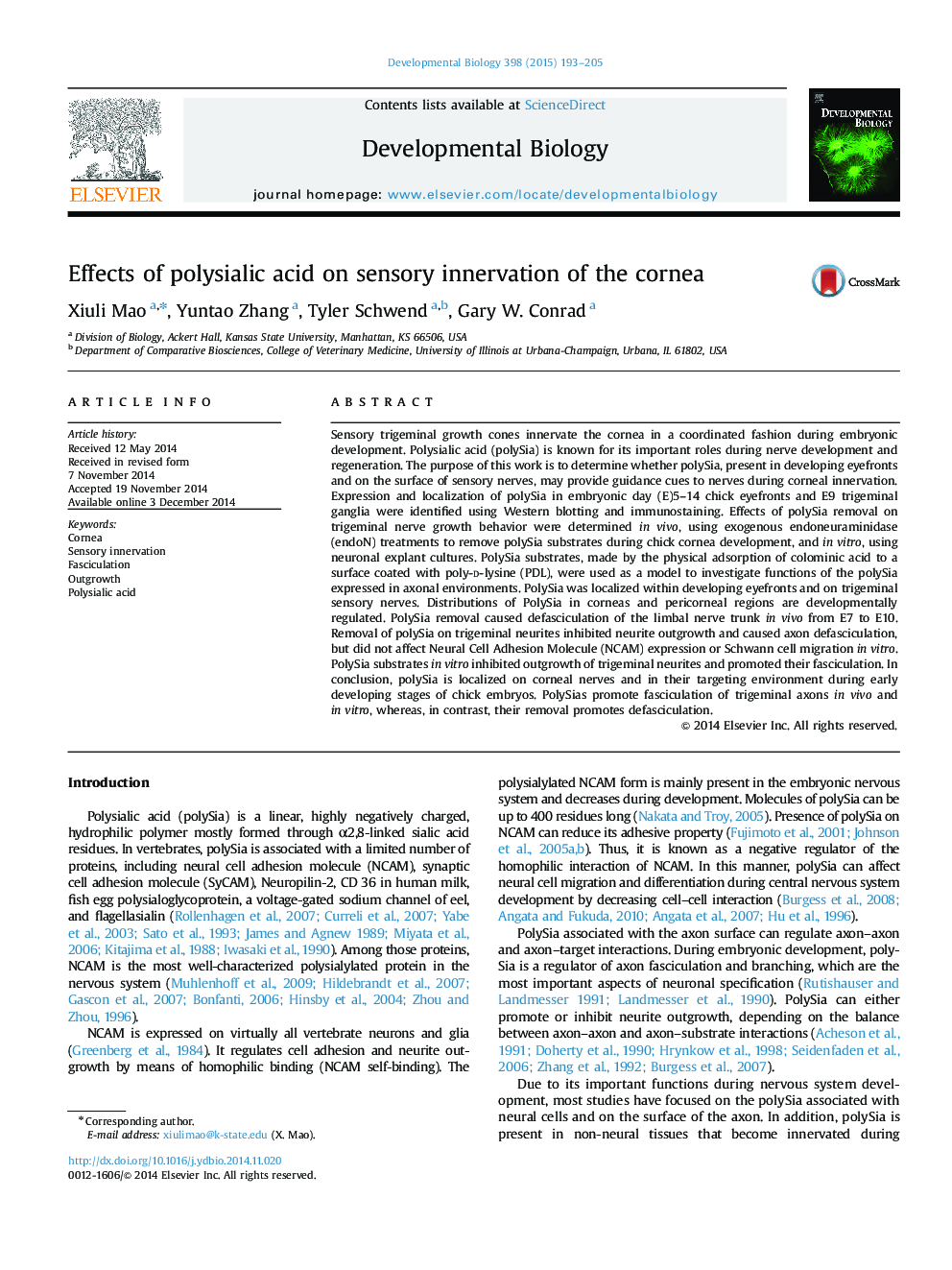| کد مقاله | کد نشریه | سال انتشار | مقاله انگلیسی | نسخه تمام متن |
|---|---|---|---|---|
| 10931629 | 1093656 | 2015 | 13 صفحه PDF | دانلود رایگان |
عنوان انگلیسی مقاله ISI
Effects of polysialic acid on sensory innervation of the cornea
ترجمه فارسی عنوان
اثرات اسید پلیسیالیک بر ناهنجاری حسی قرنیه
دانلود مقاله + سفارش ترجمه
دانلود مقاله ISI انگلیسی
رایگان برای ایرانیان
کلمات کلیدی
موضوعات مرتبط
علوم زیستی و بیوفناوری
بیوشیمی، ژنتیک و زیست شناسی مولکولی
بیولوژی سلول
چکیده انگلیسی
Sensory trigeminal growth cones innervate the cornea in a coordinated fashion during embryonic development. Polysialic acid (polySia) is known for its important roles during nerve development and regeneration. The purpose of this work is to determine whether polySia, present in developing eyefronts and on the surface of sensory nerves, may provide guidance cues to nerves during corneal innervation. Expression and localization of polySia in embryonic day (E)5-14 chick eyefronts and E9 trigeminal ganglia were identified using Western blotting and immunostaining. Effects of polySia removal on trigeminal nerve growth behavior were determined in vivo, using exogenous endoneuraminidase (endoN) treatments to remove polySia substrates during chick cornea development, and in vitro, using neuronal explant cultures. PolySia substrates, made by the physical adsorption of colominic acid to a surface coated with poly-d-lysine (PDL), were used as a model to investigate functions of the polySia expressed in axonal environments. PolySia was localized within developing eyefronts and on trigeminal sensory nerves. Distributions of PolySia in corneas and pericorneal regions are developmentally regulated. PolySia removal caused defasciculation of the limbal nerve trunk in vivo from E7 to E10. Removal of polySia on trigeminal neurites inhibited neurite outgrowth and caused axon defasciculation, but did not affect Neural Cell Adhesion Molecule (NCAM) expression or Schwann cell migration in vitro. PolySia substrates in vitro inhibited outgrowth of trigeminal neurites and promoted their fasciculation. In conclusion, polySia is localized on corneal nerves and in their targeting environment during early developing stages of chick embryos. PolySias promote fasciculation of trigeminal axons in vivo and in vitro, whereas, in contrast, their removal promotes defasciculation.
ناشر
Database: Elsevier - ScienceDirect (ساینس دایرکت)
Journal: Developmental Biology - Volume 398, Issue 2, 15 February 2015, Pages 193-205
Journal: Developmental Biology - Volume 398, Issue 2, 15 February 2015, Pages 193-205
نویسندگان
Xiuli Mao, Yuntao Zhang, Tyler Schwend, Gary W. Conrad,
